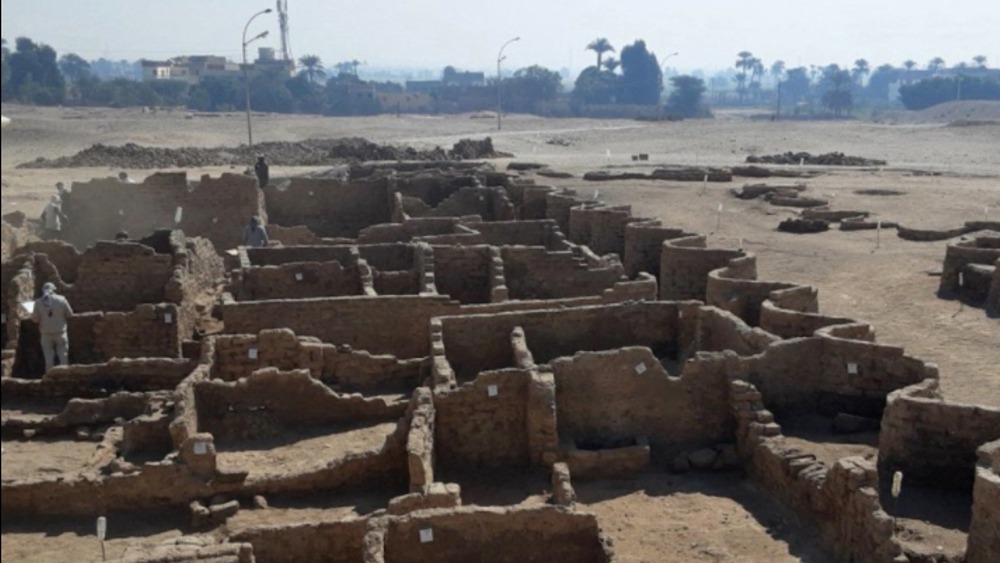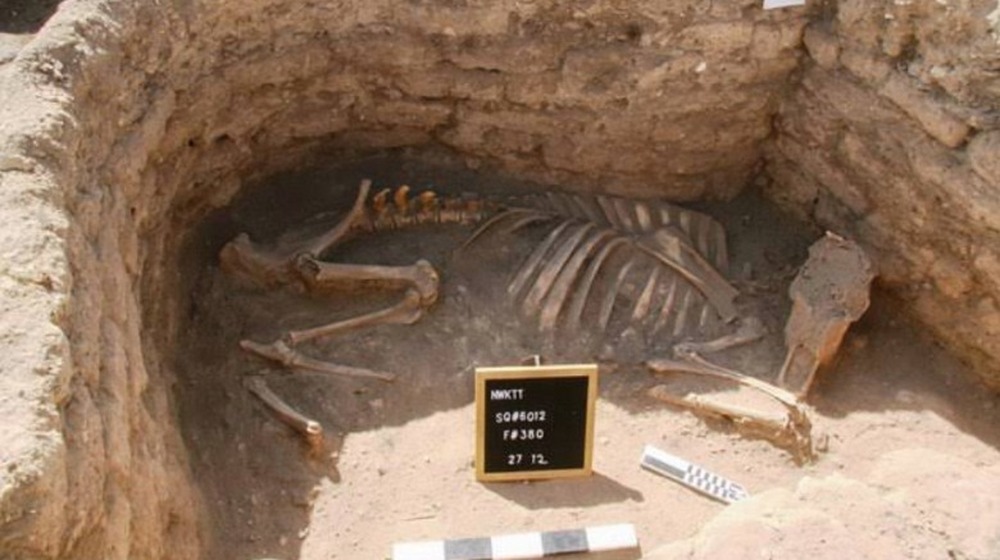Archaeologists Unearth Lost Golden City In Egypt
In September 2020, archaeologists in Egypt made a startling discovery in the modern city of Luxor, once the capital of ancient Egypt, Thebes. According to National Geographic, the spectacularly preserved site could offer clues into one of the greatest mysteries in the history of that enigmatic civilization. Around 3,000 years ago, Thebes was ruled over by the pharaoh Amenhotep III, but when he died, his son forsook his father's legacy and more than a century and a half of tradition. He abandoned Thebes to found a new city, where he and his wife Nefertiti led a revolution in ancient Egyptian art and religion, dedicating it to the sun god Aten. Amenhotep IV changed his name to Akhenaten, meaning "devoted to Aten," and gave the new city the same name.
But Akhenaten's stint as the capital of the Egyptian empire lasted only 17 years. When Akhenaten's son, Tutankhamun, took the throne, he abandoned his father's capriciously founded capital and moved the seat of his kingdom to Memphis. Akhenaten, which modern archaeologists call Amarna, was discovered in the 18th century, and it has baffled researchers ever since. Why this aberration in pharaonic tradition? Why did Akhenaten leave Thebes? And why did Tutankhamen bail on Akhenaten and erase his father's name from Egypt's history? Some are hoping to find answers in what is being called the "lost golden city of Luxor."
The lost golden city of Luxor is a treasure trove for archaeologists
Archaeologist Salima Ikram told Nat Geo that the discovery of the lost golden city "really is a phenomenal find," and hailed it as "an Egyptian version of Pompeii." The site offers a snapshot into the reign of Amenhotep III, who ruled ancient Egypt from 1386 to 1353 B.C., a time of great wealth and power. It consists of mudbrick structures closed in by a zigzagging wall as high as nine feet tall. Inside the buildings, they made some truly incredible and perplexing discoveries: quotidian items like kitchen and cooking utensils, materials for creating art, and objects used in the production of glass and metal. They found several receptacles, bricks, and scarab beetles bearing the royal seal of Amenhotep III. They also found hieroglyphics that read, "The aten is found living on truth."
But the strangest things they found were surely the pair of cows or bulls buried inside a structure within the city. Archaeologists have no idea why people would bury cattle inside buildings, but they are investigating to try and figure that out.
Not all researchers are convinced that the site will yield answers as to why Akhenaten deserted the city of his father. Johns Hopkins professor Betsy Bryan said she doesn't think "we'll get any closer to answering that question through this particular city." However, researchers found four separate settlement layers in the lost city, so who knows what they'll find as they continue to dig.

